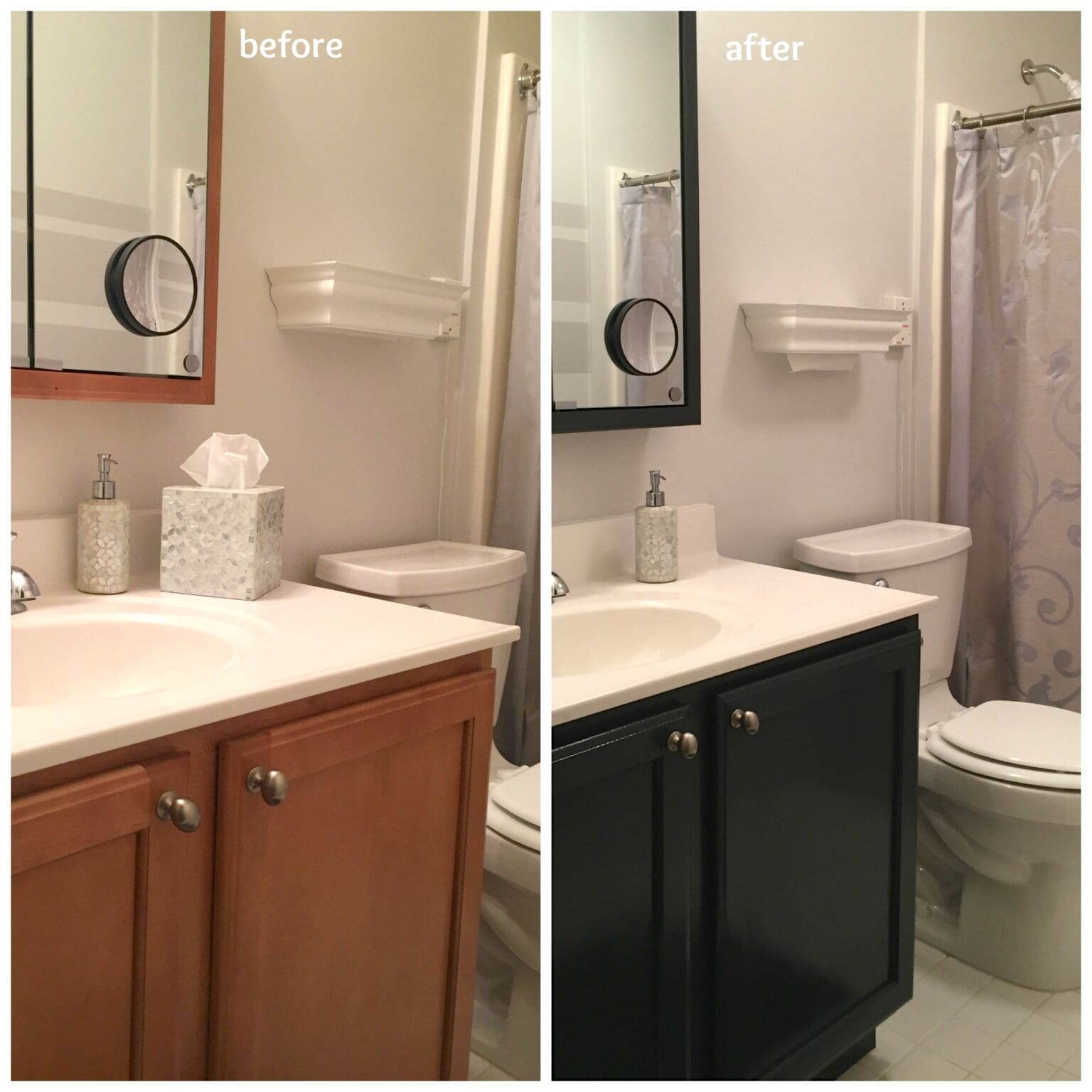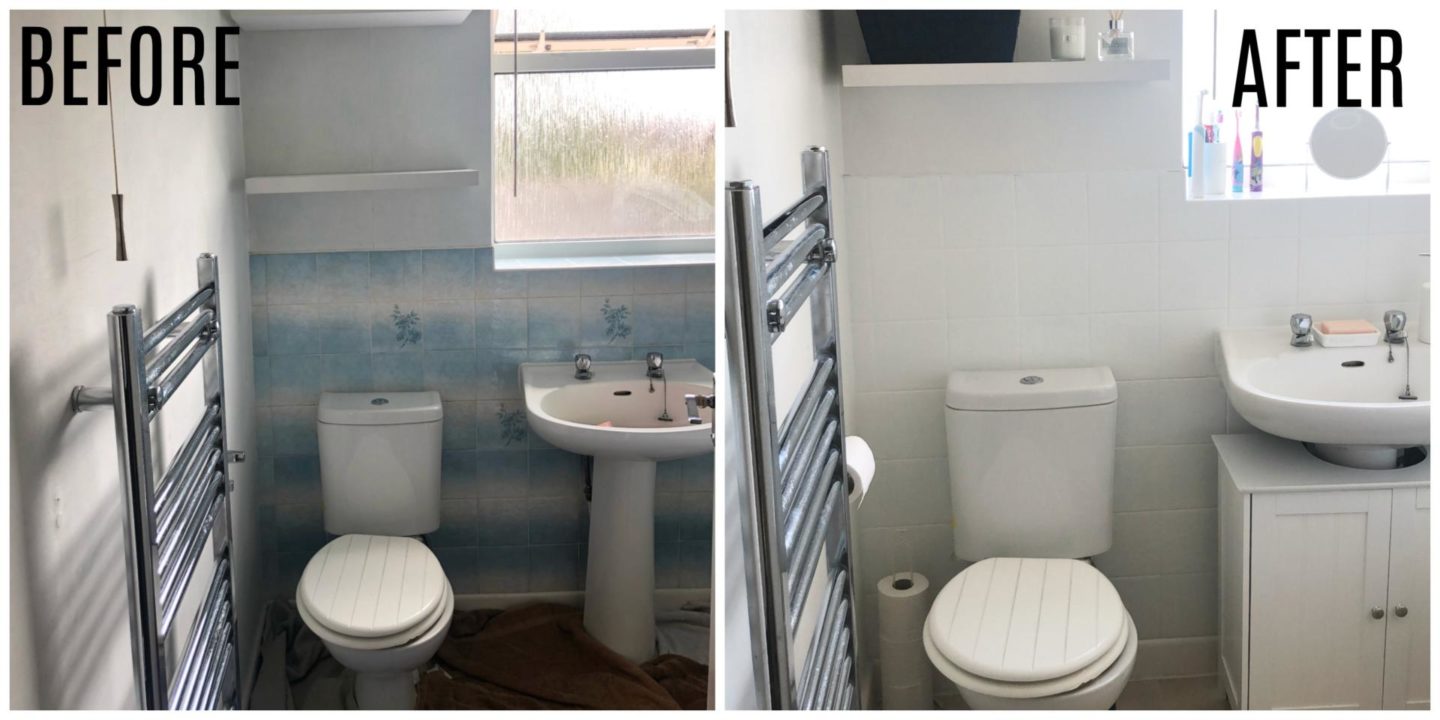Preparing the Bathroom for Taping: How To Tape A Bathroom Before Painting
/Man-cleaning-wall-GettyImages-543194649-5891faa85f9b5874ee8f0e69.jpg)
A clean and smooth surface is crucial for achieving a professional-looking paint job. Before you start taping, take the time to prepare your bathroom thoroughly. This will ensure that your paint adheres properly and that you achieve a flawless finish.
Cleaning the Bathroom
A clean bathroom is essential for a successful painting project. Dust, dirt, and grime can interfere with the adhesion of the paint, leading to uneven coverage and a less-than-perfect finish.
- Start by removing any loose items from the bathroom, such as towels, toiletries, and rugs. This will give you a clear workspace and prevent them from getting in the way.
- Use a damp cloth to wipe down all surfaces, including the walls, ceiling, and trim. Pay special attention to areas that tend to accumulate dirt, such as around the sink, toilet, and shower.
- For stubborn stains, you can use a mild cleaning solution. Avoid harsh chemicals, as they can damage the paint or the surface of your bathroom.
- Once you have cleaned the bathroom, allow it to dry completely before moving on to the next step.
Removing Loose Paint, Caulk, and Wallpaper
Before you can tape your bathroom, you need to ensure that the surfaces are smooth and free of any loose paint, caulk, or wallpaper. These imperfections can interfere with the adhesion of the paint and create an uneven finish.
- Use a scraper to remove any loose paint or caulk. Start at the edges and work your way towards the center. Be careful not to damage the underlying surface.
- For peeling wallpaper, use a steamer or wallpaper remover. Follow the manufacturer’s instructions carefully.
- Once you have removed all loose paint, caulk, and wallpaper, use sandpaper to smooth out any rough edges or imperfections. This will create a smooth surface for the paint to adhere to.
Patching Holes and Cracks
Holes and cracks in the walls and ceiling can detract from the overall appearance of your bathroom. Patching these imperfections before you paint will give your bathroom a clean and polished look.
- For small holes and cracks, you can use spackling paste or joint compound. Apply the paste with a putty knife, making sure to fill the hole or crack completely.
- For larger holes, you may need to use a patch kit. These kits typically include a mesh patch and a bonding agent. Follow the manufacturer’s instructions carefully.
- Once the patching compound has dried, use sandpaper to smooth out any rough edges. This will create a smooth surface for the paint to adhere to.
Protecting Surfaces from Paint Splatters
Paint splatters can be a nuisance, especially in a small bathroom. Take steps to protect your floors and fixtures from paint splatters.
- Cover the floor with drop cloths or plastic sheeting. Secure the edges with tape to prevent them from moving.
- Wrap delicate fixtures, such as faucets and showerheads, with plastic wrap or painter’s tape. This will protect them from paint splatters.
- If you have a bathtub, cover it with a plastic shower curtain or a drop cloth. This will prevent paint from getting on the tub surface.
Applying Painter’s Tape

Applying painter’s tape is an essential step in achieving a clean and professional paint job. The right type of tape and proper application techniques are crucial for preventing paint bleed and ensuring crisp lines.
Types of Painter’s Tape
Choosing the right type of painter’s tape depends on the surface you are taping and the type of paint you are using. Here are some of the most common types of painter’s tape and their best uses:
- General-Purpose Painter’s Tape: This is the most common type of painter’s tape and is suitable for most surfaces, including walls, trim, and windows. It offers good adhesion and is easy to remove.
- Delicate Surface Tape: Designed for delicate surfaces like wallpaper, drywall, and finished wood, this tape offers low adhesion and is less likely to damage the surface upon removal.
- High-Adhesion Tape: This type of tape is ideal for surfaces with high gloss or textured surfaces, providing strong adhesion to prevent paint bleed.
- Frog Tape: Known for its unique paint-blocking technology, Frog Tape is designed to create exceptionally crisp lines, even with high-pigment paints.
Applying Painter’s Tape
Proper application of painter’s tape is crucial for achieving crisp lines and preventing paint bleed. Follow these steps for a successful application:
- Clean the Surface: Before applying tape, ensure the surface is clean and dry. Dust, dirt, or grease can interfere with the tape’s adhesion.
- Unroll the Tape Slowly: Unroll the tape slowly and evenly, avoiding wrinkles or creases.
- Press the Tape Firmly: Use a putty knife or your fingers to press the tape firmly against the surface, ensuring good adhesion. Pay close attention to corners and edges.
- Smooth Out the Tape: Run your finger along the length of the tape to smooth out any wrinkles or bubbles. This helps prevent paint bleed.
- Overlap Corners: When taping corners, overlap the tape slightly to create a strong seal and prevent paint bleed.
- Avoid Over-Stretching: Over-stretching the tape can cause it to shrink and loosen after painting, leading to paint bleed.
Using a Putty Knife
A putty knife can be a valuable tool for applying painter’s tape, especially when working with corners or edges. Here’s how to use it:
- Press the Tape: Use the putty knife to press the tape firmly against the surface, ensuring good adhesion.
- Smooth Out the Tape: Run the putty knife along the length of the tape to smooth out any wrinkles or bubbles.
- Create a Sharp Line: In corners or edges, use the putty knife to create a sharp, clean line.
Avoiding Wrinkles and Bubbles
Wrinkles and bubbles in the tape can lead to paint bleed and an uneven paint job. Here are some tips to avoid them:
- Unroll Slowly: Unroll the tape slowly and evenly, avoiding wrinkles or creases.
- Press Firmly: Press the tape firmly against the surface, ensuring good adhesion.
- Smooth Out the Tape: Run your finger or a putty knife along the length of the tape to smooth out any wrinkles or bubbles.
Painting the Bathroom

Now that your bathroom is prepped and taped, it’s time to get your hands dirty (figuratively, of course!). Painting a bathroom requires a bit more consideration than a regular room, as it needs to withstand moisture and potential mildew.
Choosing the Right Paint
Choosing the right paint for your bathroom is crucial for both aesthetics and durability.
- Moisture Resistance: Bathroom paint needs to be resistant to moisture, as it’s constantly exposed to steam and humidity. Look for paints labeled as “moisture-resistant” or “bathroom paint”.
- Mildew Prevention: Mildew can be a common problem in bathrooms, especially in humid climates. Choose a paint with mildewcide added, which will help prevent mold and mildew growth.
- Durability: Bathroom paint needs to be durable and withstand frequent cleaning. Look for paints with a semi-gloss or gloss finish, which are more washable and resistant to scratches.
- Color Choice: Consider the overall style of your bathroom and choose a color that complements it. Light colors can make the space feel larger and brighter, while darker colors can create a more intimate atmosphere.
Preparing and Mixing the Paint
Before you start painting, make sure to prepare your paint according to the manufacturer’s instructions.
- Stir Thoroughly: Stir the paint thoroughly with a paint stirrer to ensure the pigments are evenly distributed.
- Add Thinner (if necessary): Some paints may require a thinner to achieve the desired consistency. Follow the manufacturer’s instructions for the correct type and amount of thinner to use.
- Pour into a Paint Tray: Pour the paint into a paint tray with a liner. This will make it easier to apply the paint with a roller.
Applying the Paint, How to tape a bathroom before painting
Now comes the fun part! Applying paint to your bathroom requires some techniques to ensure a smooth and even finish.
- Start with the Trim: Use a brush to paint the trim around the bathroom, including the baseboards, window frames, and door frames.
- Use a Roller for Walls and Ceilings: Use a roller to apply paint to the walls and ceilings. Load the roller with paint, but don’t overload it.
- Use Even Strokes: Apply the paint in smooth, even strokes, working from top to bottom.
- Avoid Drips and Runs: Be careful not to overload the roller or brush, as this can lead to drips and runs. If you do get a drip, wipe it up immediately with a damp cloth.
- Apply Two Coats: Most paints require two coats to achieve full coverage. Allow the first coat to dry completely before applying the second coat.
